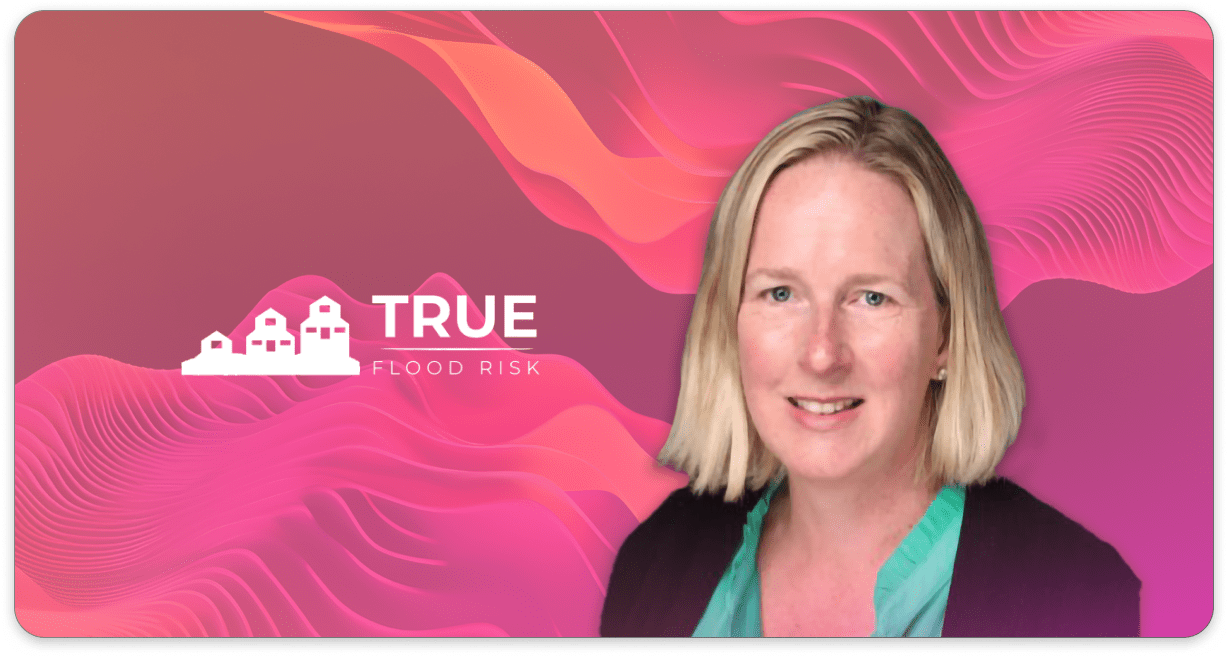
Company Overview
Shelly Klose is Founder & CEO of True Flood Risk, a global AI-powered platform delivering real-time, property-level flood risk and resilience insights for over 200 million properties worldwide. Learn more at https://truefloodrisk.com.
Can you tell us a little about your background before starting your company?
Before founding True Flood Risk, I spent over two decades at the intersection of marketing, data science, and strategy consulting translating complex insights into real-world impact. I began my career in account planning at top agencies like Ogilvy & Mather and Anderson & Lembke (now McCann), helping global tech clients like IBM and Microsoft navigate early digital transformation. I’ve always had an entrepreneurial drive. In the late 1990s, I had a small but successful exit with a vacation rental and home exchange site that, at its peak, was ranked #2 on Yahoo. I also founded C2 Research, a boutique strategy and analytics firm, which gave me a front-row seat to the evolving power of data in business value. My first foray into geospatial analytics began where I was a subcontractor working on a project for Recovery.gov, where ESRI ArcGIS tools were used to track billions in federal stimulus spending. That experience showed me how visualizing data could be used but to tell powerful stories to a wide array of audiences.
How did you start your company? What were the first steps you took to get it off the ground and how did you identify the need for your product/service in the market?
The idea for True Flood Risk came from a personal experience. I was living on the Jersey Shore during Superstorm Sandy and saw firsthand the devastating impact of flooding. Some homes were submerged while others, just feet away, were untouched. My home had a few extra stairs leading into it which saved us from financial hardship. That moment made clear how limited property level flood risk data really was. I launched True Flood Risk in 2018 to fill that gap: to provide high-resolution, property-level flood insights using AI and patented technology. Our flagship innovation is our patented method for estimating First Floor Height (FFH), the missing link in understanding true structural flood exposure. Historically, FFH data was only available through costly land surveys or Elevation Certificates (ECs), which are time-consuming and impractical at scale. What began as a personal mission has since grown into a platform that supports flood risk assessments for millions of properties worldwide.
What innovations or unique features set your company apart from others in the industry?
What sets True Flood Risk apart is our precision, affordability, and scalability. Unlike traditional approaches that rely on static flood maps or physical land surveys, our platform uses our patented technology to estimate a building’s structural elevation specifically its First Floor Height in real time and at scale. FFH is the most critical factor in assessing flood vulnerability, yet it’s often missing from conventional models. By combining our FFH technology with authoritative and proprietary geospatial data, we provide granular, actionable insights that support more accurate insurance pricing, climate adaptation planning, and emergency response. We’ve quietly empowered a wide range of stakeholders from global insurers to city governments with the tools to protect lives, property, and infrastructure. And we’re only getting started.
What has been the most effective strategy for scaling your business?
One of the most effective strategies for scaling True Flood Risk has been staying closely attuned to the needs of our partners from local governments protecting critical infrastructure, to insurers refining risk selection, to property owners making informed decisions about mitigation. For example we started with one data point and built a full suite of solutions built around that unique insight. We’ve also prioritized interoperability, ensuring that our data integrates seamlessly into underwriting platforms, municipal resilience tools, and consumer-facing applications. Our approach is science-driven, but our focus is usability and that balance has been key to our growth. We’ve had the privilege of supporting flood resilience leaders like Swiss Re, Suncorp, Travelers, the National Emergency Management Agency of Australia, and communities like Hampton and Norfolk, VA to name a few. Strategic collaborations with data resellers like Nearmap, along with volunteer roles in groups such as the World Bank Water Communities and Flood Mitigation Industry Association, have helped amplify both our reach and our credibility.
Looking ahead, what are your goals for the future of your company?
For companies looking to work with the insurance business — particularly across underwriting, claims, sales, or marketing on the P&C side — here’s what we’ve learned:
Differentiate meaningfully. Offer something truly unique — a capability or dataset that can’t be easily replicated or built in-house. It’s not enough to be interesting; you need to be indispensable.
Start with growth-focused teams. For us, initially sales and marketing teams seemed to move faster and were open to innovating approaches. We began our journey by helping these teams grow their business more profitably by using our data to better target the types of properties that fit their desired risk profile. Whether it was improving segmentation, identifying cross-sell opportunities, or entering new markets with greater confidence, our insights allowed them to align acquisition strategies with actual risk tolerance.
Build trust through performance. Expanding into underwriting and claims required a much deeper level of validation. These functions are understandably cautious, they need data that’s not only innovative, but proven, reliable, and explainable. When you’re informing decisions that affect pricing, loss mitigation, or claims triage, the stakes are high. Earning their trust takes time, rigorous testing, and transparency but once established, that trust becomes the foundation for long-term collaboration.
Find your champions. Identify internal advocates within insurers who see the long-term value of your solution and are willing to co-develop, iterate, and refine it with you. Some of our best partnerships started with a single team who saw the potential and helped us scale from there.
Co-create value. Don’t just offer a tool. Solve a real problem. Whether it’s helping a carrier improve loss ratios, uncover hidden exposure, or accelerate growth in underpenetrated markets, your solution should be tied to measurable business impact.
Be patient but persistent. Insurance is a complex ecosystem with long sales cycles and multiple decision-makers. But if you’re solving a meaningful need and can demonstrate a clear return, the partnerships that follow are incredibly resilient.
Ultimately, trust in data is everything. When insurers use your insights to inform billion-dollar decisions — from pricing to reserving to customer targeting — they need to know the data is credible, defensible, and actionable. That trust is earned through performance and reinforced through partnership.
Looking ahead, we’re expanding our global footprint, integrating with additional climate models, and launching tools like our Flood Mitigation Calculator to deliver tailored, cost-effective resilience strategies. Our long-term vision is to make flood risk data as intuitive and accessible as a credit score — a foundational metric for everyone from individual homeowners to global reinsurers.
The climate crisis isn’t waiting. Neither are we.





